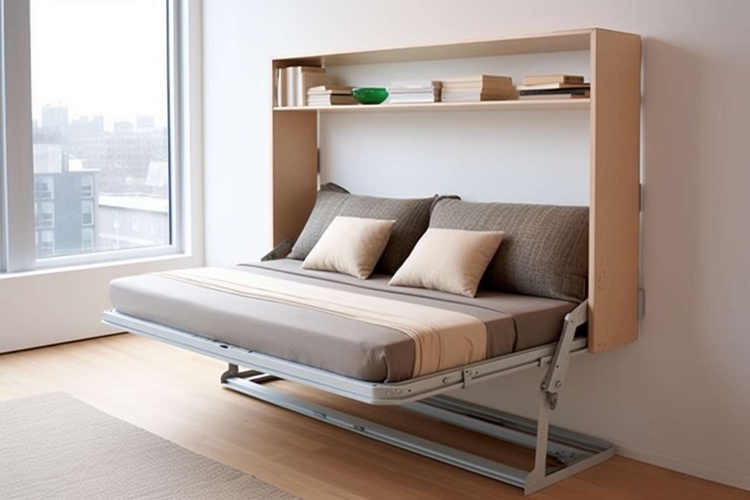Micro-Apartments: The Future of Urban Living?
Introduction: In the ever-evolving landscape of real estate, a new trend is catching the attention of developers, investors, and city dwellers alike: micro-apartments. These compact living spaces, typically ranging from 200 to 400 square feet, are reshaping urban housing markets and challenging traditional notions of what constitutes a home. As cities grapple with housing shortages and skyrocketing rents, micro-apartments offer a potential solution that's both innovative and divisive.

Historical Context and Urban Housing Challenges
The emergence of micro-apartments can be traced back to the rapid urbanization and housing shortages following World War II. In Japan, the concept of capsule hotels in the 1970s laid groundwork for ultra-compact living spaces. Fast forward to today, and we see similar pressures driving the micro-apartment trend: population growth, urban migration, and the need for affordable housing options in city centers.
Current Market Trends and Economic Factors
Recent data indicates a growing demand for micro-apartments, particularly among young professionals and students in major metropolitan areas. In cities like Seattle, San Francisco, and New York, where average rents have outpaced wage growth, these compact units offer an entry point into desirable neighborhoods at a fraction of the cost of traditional apartments. According to a 2022 real estate report, micro-apartments in prime urban locations can command rents up to 30% higher per square foot than conventional units, making them attractive to investors and developers.
Design Innovations and Space Optimization
The success of micro-apartments hinges on intelligent design. Architects and interior designers are pushing boundaries to create spaces that feel larger than they are. Techniques include high ceilings, large windows, and open floor plans. Furniture plays a crucial role, with Murphy beds, fold-down tables, and modular storage systems becoming standard features. Some developers are even incorporating shared amenities like rooftop gardens, co-working spaces, and communal kitchens to compensate for the limited private space.
Regulatory Hurdles and Zoning Challenges
Despite their potential to address housing shortages, micro-apartments face regulatory obstacles in many cities. Minimum square footage requirements, parking mandates, and density restrictions can make these projects difficult to approve. However, some forward-thinking municipalities are revising zoning laws to accommodate micro-housing. For instance, Seattle has created a specific category for micro-housing in its building code, while New York City launched a pilot program to test the viability of units smaller than previously allowed.
Impact on Urban Demographics and Lifestyle
Micro-apartments are not just changing the physical landscape of cities; they’re influencing urban demographics and lifestyles. These units appeal primarily to millennials and Gen Z, who often prioritize location over space and are more likely to embrace minimalist living. This shift could have long-term implications for urban planning, retail, and transportation. Critics argue that micro-apartments may lead to transient communities and exacerbate gentrification, while proponents see them as a way to maintain diversity in increasingly expensive urban cores.
Environmental Considerations and Sustainability
From an environmental perspective, micro-apartments offer several advantages. Their smaller footprint translates to reduced energy consumption and lower carbon emissions per resident. Many micro-apartment buildings incorporate green technologies like solar panels, rainwater harvesting systems, and energy-efficient appliances. Additionally, by increasing density in urban centers, these developments can help combat suburban sprawl and reduce reliance on cars.
Investment Potential and Market Outlook
For real estate investors, micro-apartments present an intriguing opportunity. The higher rent per square foot and potential for lower vacancy rates make them attractive, especially in markets with strong job growth and limited housing supply. However, investors should be cautious of potential regulatory changes and shifts in consumer preferences. The long-term resilience of the micro-apartment market will depend on factors such as economic conditions, demographic trends, and the evolution of remote work practices.
Challenges and Criticisms
Despite their potential benefits, micro-apartments are not without critics. Concerns include the psychological effects of living in such small spaces, the impact on family formation, and the potential for exploitation by landlords. Some worry that the proliferation of micro-units could lead to a two-tiered housing market, with only the wealthy able to afford spacious accommodations. These criticisms underscore the need for thoughtful urban planning and a diverse housing stock that caters to various needs and life stages.
In conclusion, micro-apartments represent a bold response to the housing challenges facing many cities today. While they may not be a panacea for all urban housing issues, they offer a creative solution that merits serious consideration. As the real estate market continues to evolve, micro-apartments could play a significant role in shaping the future of urban living, challenging our assumptions about space, community, and what it means to call a place home.





